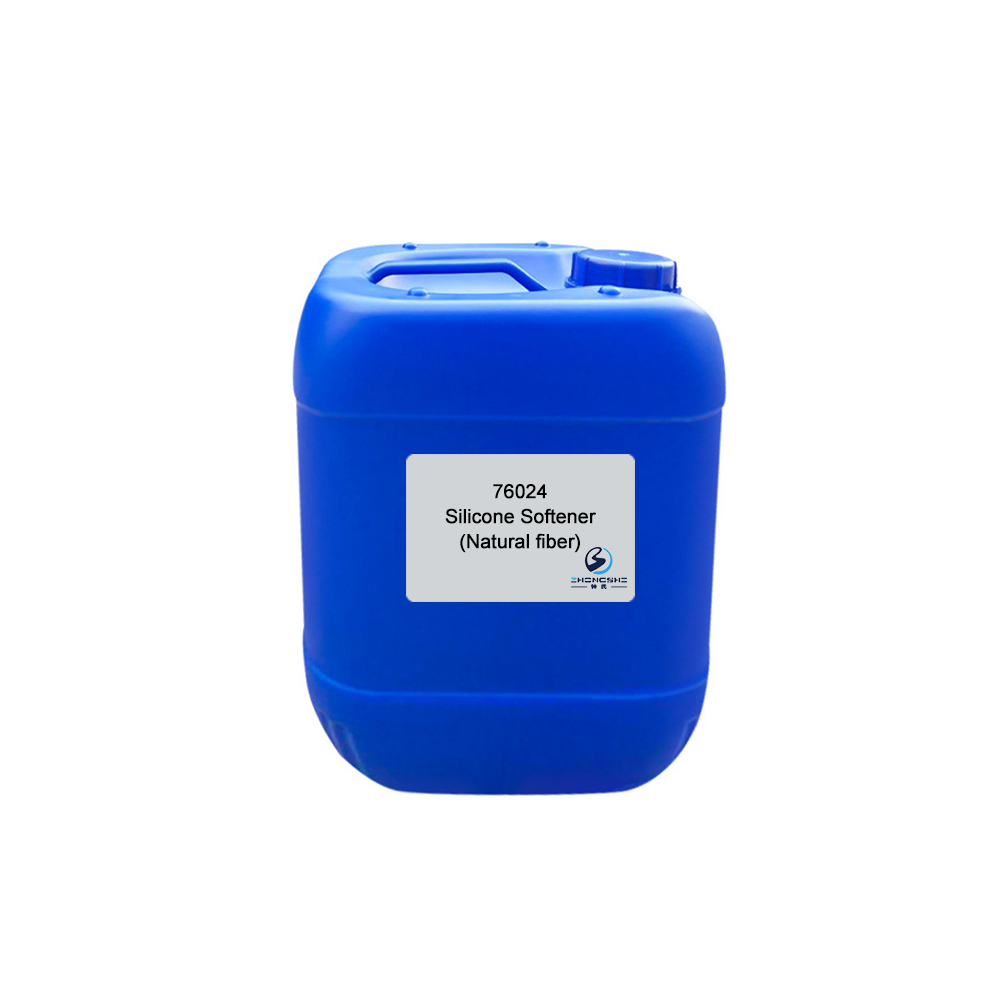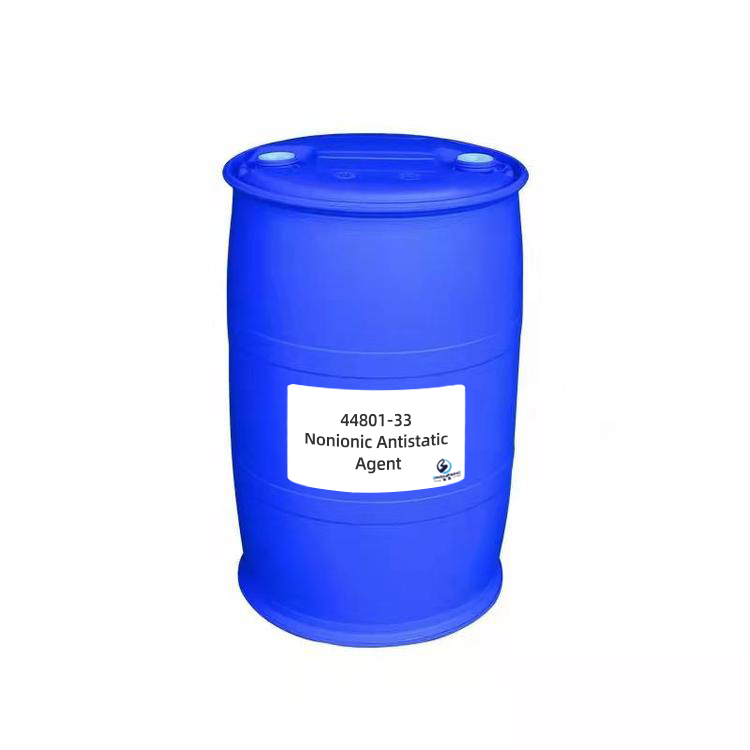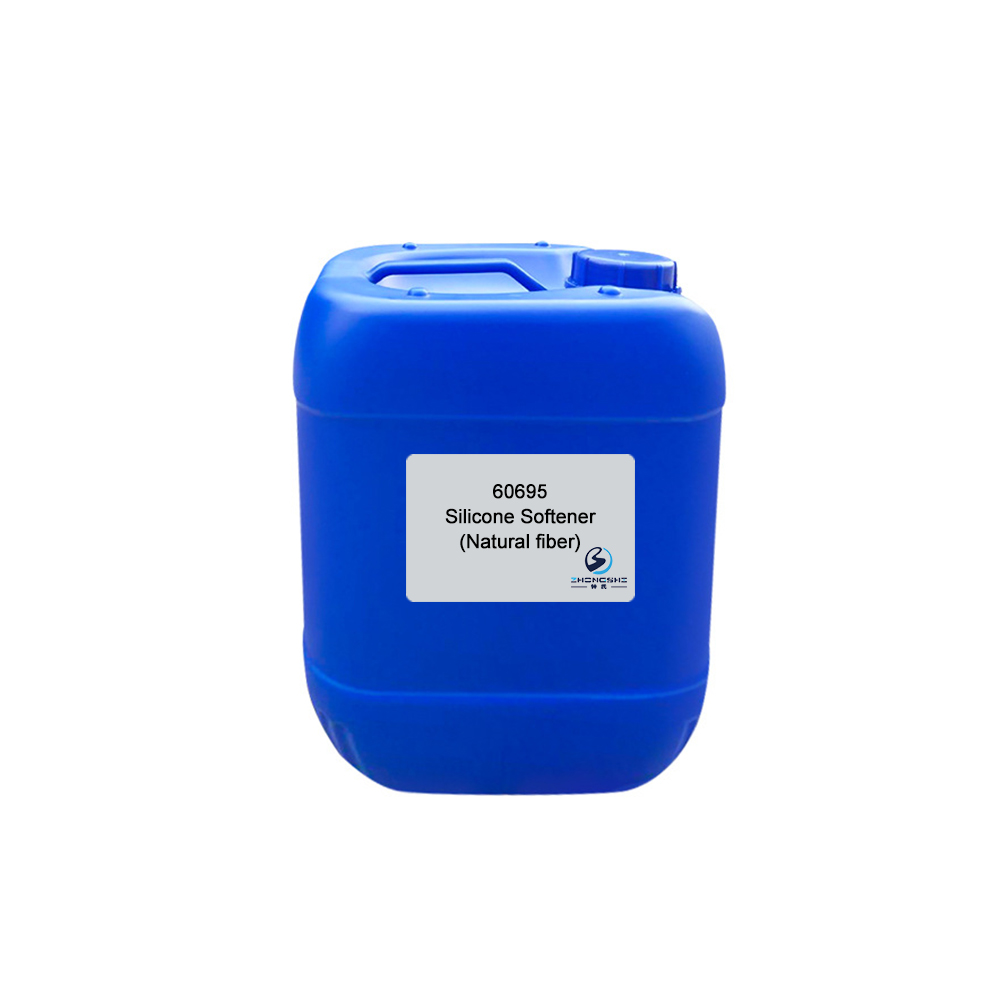76024 Silicone Softener (Low Yellowing & Low Shade Changing)
Features & Benefits
- Fits environmental protection requirements. Consistent with the European Union standard of Otex-100.
- Stable in alkali and electrolyte.
- Good mechanical stability.
- Good hydrophilicity and antistatic function.
- During use, there will be no roll banding, sticking to equipment, oil floating or demulsification.
- Imparts fabrics soft and delicate hand feeling.
- Low yellowing. Suitable for white color and bleached fabrics.
- Low shade changing. Suitable for extremely light color and sensitive color fabrics. Makes fabrics bright and pure in color.
- If the fabric needs dyeing modifying, it is easy to strip silicone.
Typical Properties
| Appearance: | Transparent fluid |
| Ionicity: | Weak cationic |
| pH value: | 6.5±0.5 (1% aqueous solution) |
| Solubility: | Soluble in water |
| Content: | 55% |
| Application: | Cotton, viscose fiber and modal, etc. |
Package
120kg plastic barrel, IBC tank & customized package available for selection
TIPS:
Importance of chemical finishing
Chemical finishing has always been an important component of textile processing, but in recent years the trend to ‘high tech’ products has increased the interest and use of chemical finishes. As the use of high performance textiles has grown, the need for chemical finishes to provide the fabric properties required in these special applications has grown accordingly.
The amount of textile chemical auxiliaries sold and used globally in one year is estimated to be about one-tenth of the world’s fiber production. With fiber production currently at 60 million tonnes, about 6 million tonnes of chemical auxiliaries are consumed. The percentage of market share of textile auxiliaries is shown in below figure. About 40 % of textile auxiliaries are used in finishing, the largest percentage usage of all textile chemicals, followed by dyeing and printing auxiliaries and pretreatment chemicals. Softeners are clearly the most important individual product group. In terms of value, the repellent group is the leader with the highest ratio of cost per amount. This reflects the relatively high cost of the fluorochemical subgroup of repellents.










